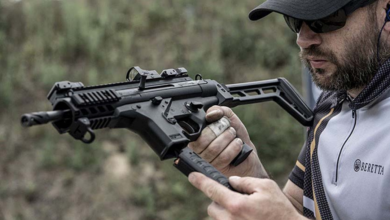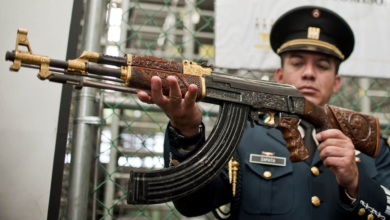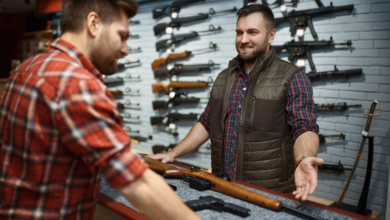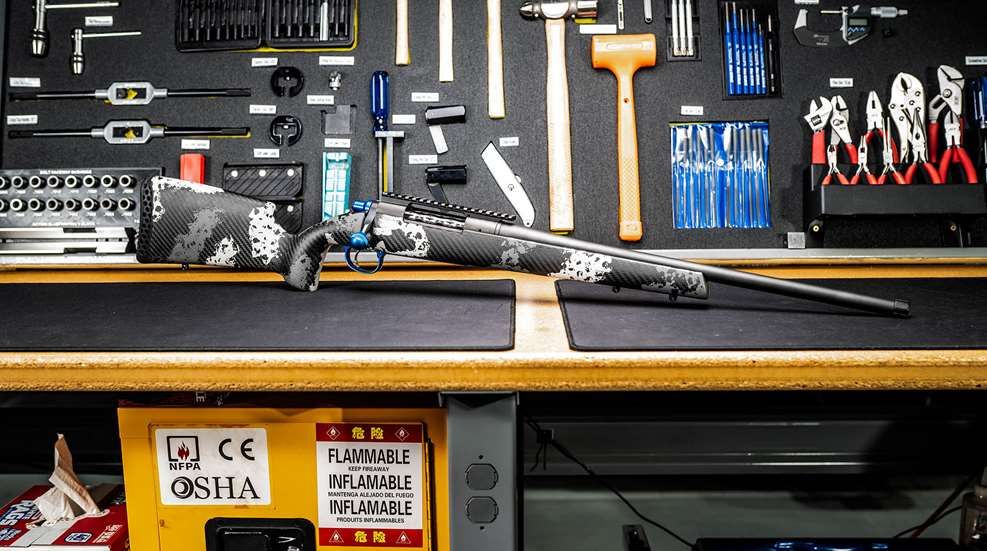THE SNUB-NOSED COMBAT MAGNUM
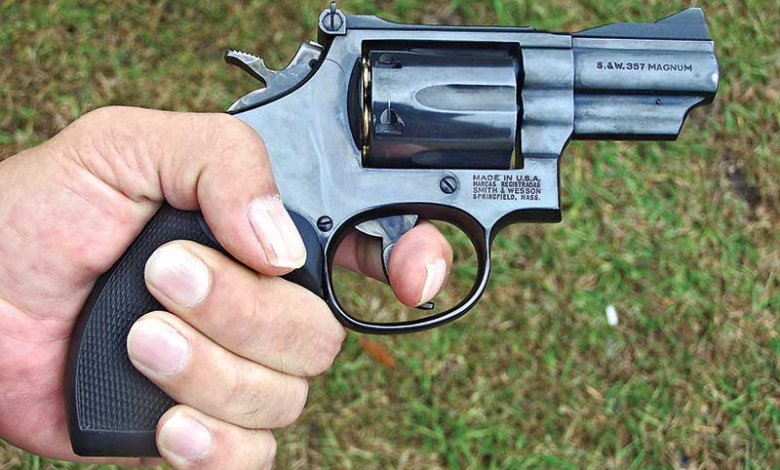
The Smith & Wesson .357 Combat Magnum was one of the most iconic handguns of the 20th Century. Introduced in the mid-1950s, it was conceptualized by Bill Jordan, the famed Border Patrolman who way back when was Field Editor of this magazine. Essentially a .357 Magnum on a .38 frame, Bill went on national television and called it, “The answer to a peace officer’s dream.”
The gun was an instant success, and for decades it was the most popular law enforcement gun in its caliber. At first it was available in Smith & Wesson’s famously handsome blue finish — by far the most popular — or nickel-plated. In the late ’50s, when S&W went to numeric model designations, it was dubbed the Model 19. In 1970 the Combat Magnum got the stainless steel treatment and was known as the Model 66. It became the gun to have in law enforcement circles, and for several years they were almost impossible for private citizens to buy, because the factory’s total production wasn’t enough to fill law enforcement demands.
The first barrel length, and always the most popular, was a nominal 4″ in length. I use the qualifying word because the barrels really measured 37⁄8″. In the late ’70s, panicked by the proposal of much-ballyhooed bans on “Saturday Night Special” handguns, S&W quietly extended the tube to a true 4″. This played havoc with police departments such as the one I served at the time, because most of the holster makers were still building duty scab-bards around dummies of the original “nominally-4″” guns, and when my agency adopted the 4″ Model 66, some of the holsters were 1/8″ too short for the safety strap to fasten properly.
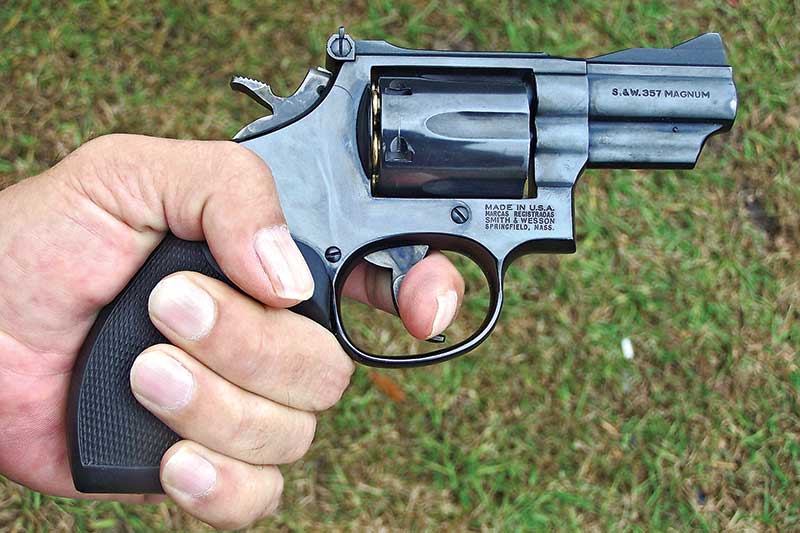
Despite its short barrel, the snub Combat Magnum gave a good account of itself in the hands of police and federal officers.
It sits in the hand as solid as a blackjack and has a good trigger reach. This blue 19 wears factory-furnished Uncle Mike’s grips.
Longer First
Six inches was the second barrel length to be offered. Some cops carried these to work, including legendary super-cop Bob Lindsey in the New Orleans area. Border Patrol shooters with 6″ 19s (issued the 4″ for patrol) won the National Police Revolver Championships in the days before the coming of custom “PPC guns” with massive stovepipe barrels.
There would also be a very few with the 83⁄8″ barrel. However, in 1966 S&W at last offered it with a 21⁄2″ barrel and rounded butt. A stainless configuration would follow in 1974 and was a different animal entirely.
The Shorty
The introduction of the snub Combat Magnum took the handgun world by storm. For one thing, the gun just had a certain “look.” On the snub version of Jordan’s baby, the ejector shroud went almost all the way to the muzzle underneath and on top, the front sight’s graceful ramp slightly resembled a shark’s dorsal fin. This revolver just had a very balanced appearance for a snubby, and it was an instant hit.
The Bureau of Alcohol, Tobacco, and Firearms adopted the short barrel Model 66. So did the US Secret Service. They would be conspicuously displayed when agents drew them at the scene of John Hinkley’s attempted assassination of Ronald Reagan. My department issued the snubbed Model 66 to detectives and our state police issued the same gun to theirs.
Calibre Press’s “Street Survival” seminars were becoming popular back then, and their lecturers recommended these snub .357s for plainclothes and off-duty carry in lieu of 5-shot .38s. In law enforcement circles, some felt if you didn’t carry a 21⁄2″ Combat Magnum off duty, you weren’t crap. FBI agents bought them in droves as privately owned, agency-approved weapons. The Bureau itself, to my knowledge, never issued them. They preferred a motif of 3″ heavy barrel and fixed sights, beginning with the Model 10-6 .38 Special and ending with the Bureau’s last standard-issue service revolver before the switch to autos, the Model 13.
Like any S&W K-frame, these revolvers were accurate. In a machine rest, they’d put every round of top-quality ammo in 1″ or so at 25 yards. The full-length grip helped to keep them there, as did a double action trigger reach well nigh perfect for the average adult male hand.
However, those round walnut grip panels had a tendency to shift in the hand when full Magnum rounds were used. A Chicago copper or FBI agent issued 158-grain +P lead hollowpoint, or one of the Feds with their ubiquitously issued 110-grain +P+ .38 Special rounds could control the gun. But if you carried it with Magnum rounds, you quickly discovered after-market grips like the round-butt Pachmayr afforded a huge improvement in controllability. Yes, losing 11⁄2″ of barrel cost some velocity, but felons shot to the ground with 125-grain Magnum loads never seemed to know the difference.

S&W’s treatment of the Model 19’s 21⁄2″ barrel gave it a unique appearance and character.
Carried, Not Shot
Jordan himself said the K-frame .357 was designed to be carried much and shot little with .357 ammo, though it proved itself to be a long-lived gun with .38 Special ammo, even in +P. Combat Magnums in general and the 66 in particular needed frequent trips to the armorer for re-timing and often split their forcing cones if shot heavily with the 125-grain Mag soon to be law enforcement’s standard. The stainless model heated up faster than chrome moly, and since superheated steel expands, would frequently lock up. It took multiple factory fixes to get this squared away.
The rounded grip and shorter barrel lightened the gun considerably, bringing unloaded weight down to 30.5 ounces compared to 36 ounces for the 4″ square-butt configuration. The gun balanced more to the rear, and it sat in the hand as solid as a blackjack. Its short barrel afforded a significant advantage in handgun retention, because a gun-grabber couldn’t get a really good hold on its truncated barrel.
One friend of mine, issued a 4″ 19 for uniform wear, bought another of his own and a snub version. He then had a gunsmith friend swap the barrels. This resulted in a 4″ round butt he found absolutely perfect for concealed carry in the waistband off duty, and a snub-nose with hand-filling, square-butt stocks for the “off-duty gun” side-matches on the PPC circuit where he competed regularly and successfully. This array gave him the best of all worlds.
Requiem
The discontinuance of the Model 19 at the end of the 20th Century and of the Model 66 in late 2004, replaced by 7-shot L-frames, lacking the same charisma, saddened the shooting world. However, ample stocks of used Combat Magnums can be had. I just bought a snub 19 for my daughter, who will have made me a grandfather by the time you read this. The gun is going to Rick Devoid at Tarnhelm Supply (www.tarn-helm.com) for his affordable conversion to the MagnaTrigger, which will allow it to be fired only by someone wearing a proprietary magnetic ring. It will be compact enough for her to carry concealed, and more safe to keep loaded and ready with a little one toddling around. Bill Jordan’s legacy, the S&W Combat Magnum, continues its more than half-century history of protecting good people.

